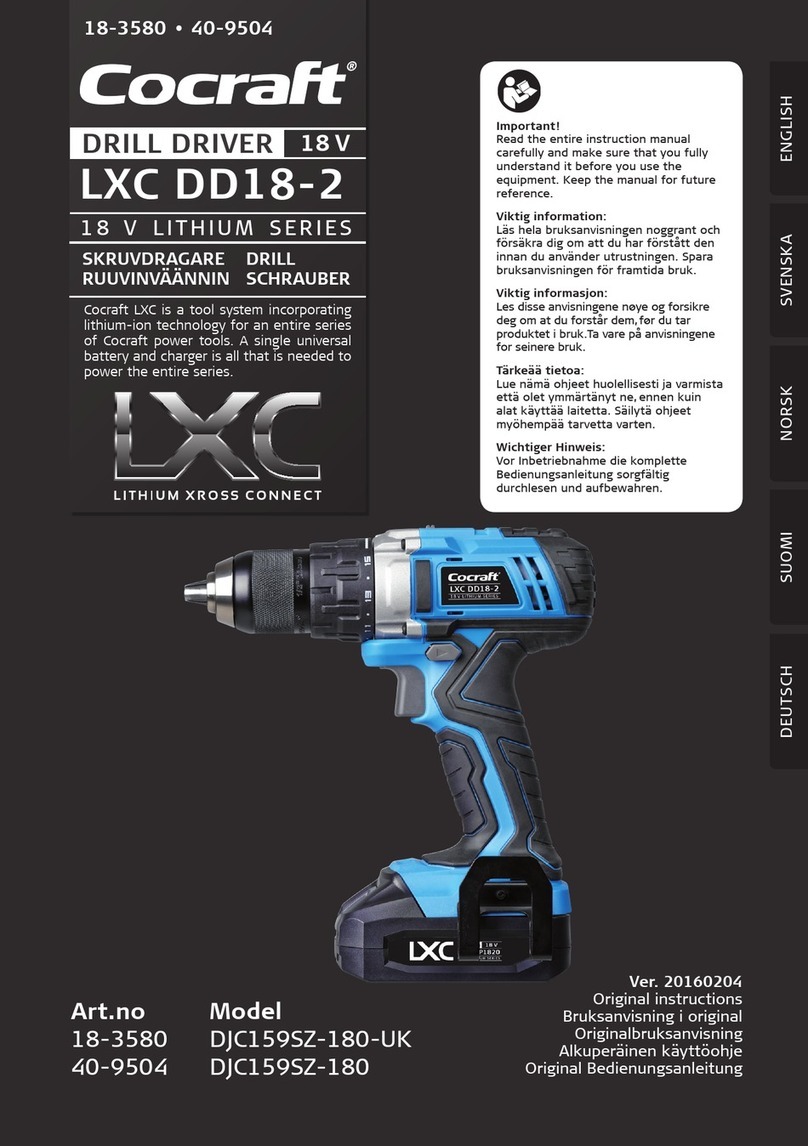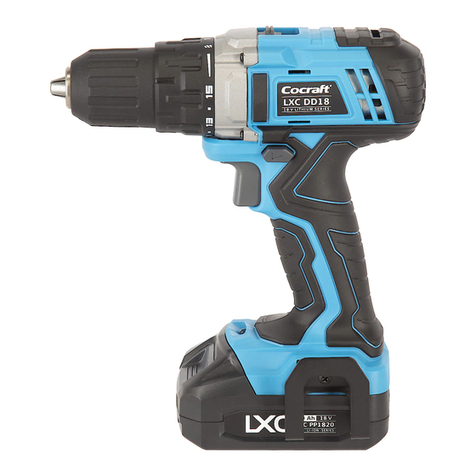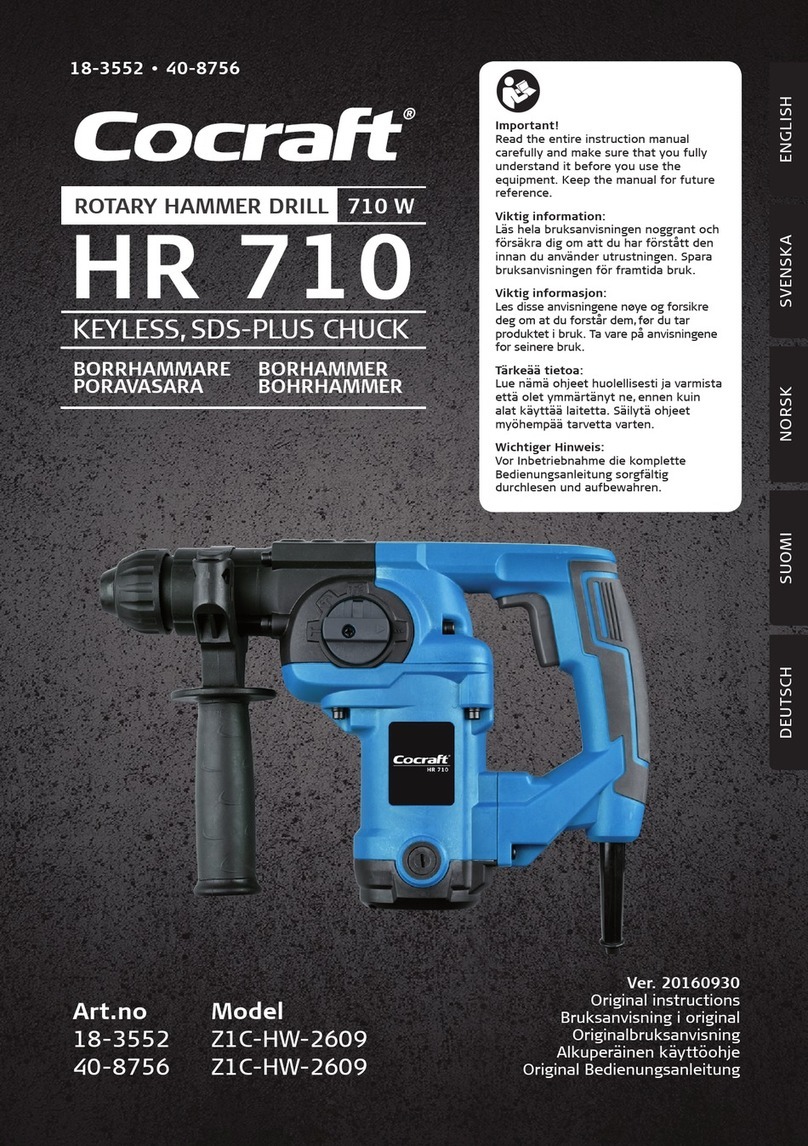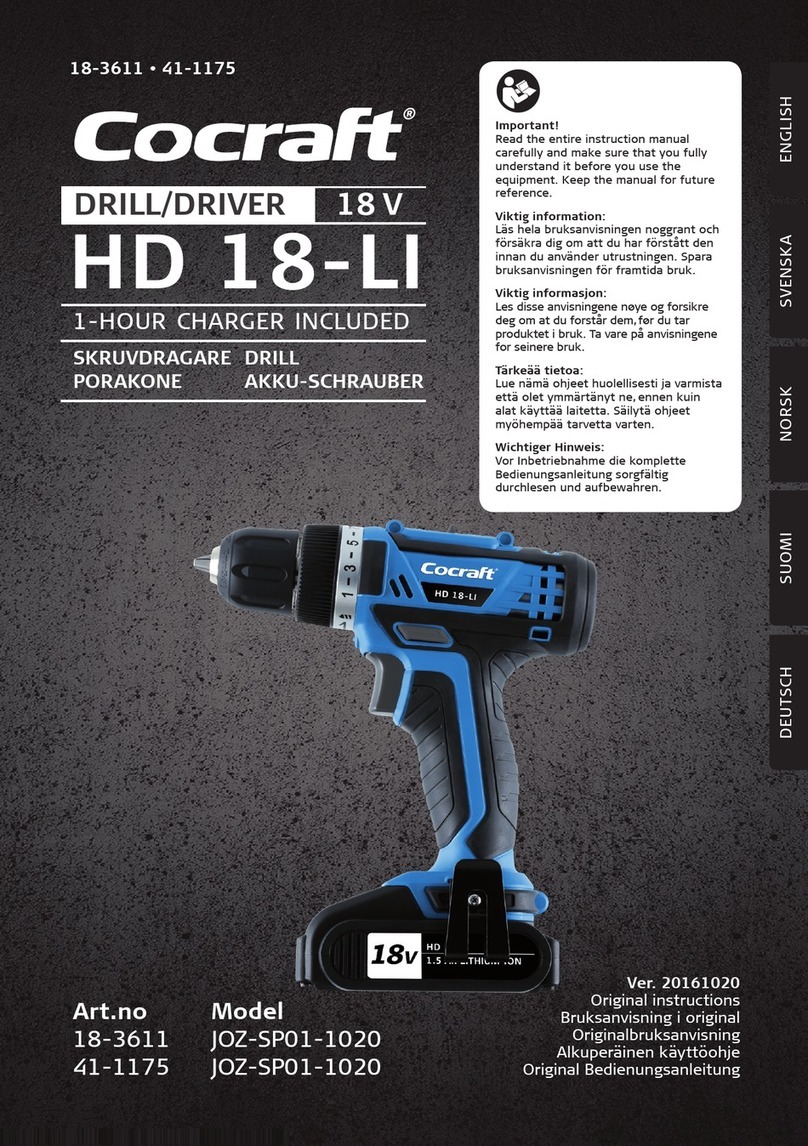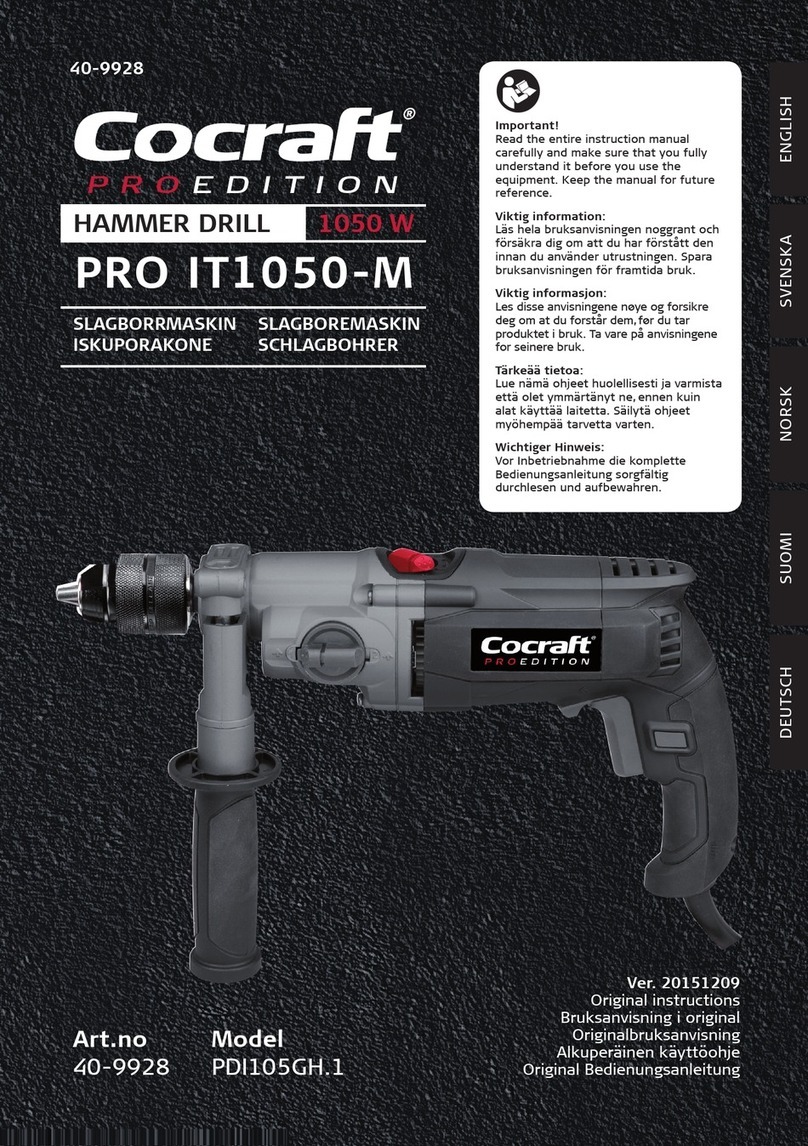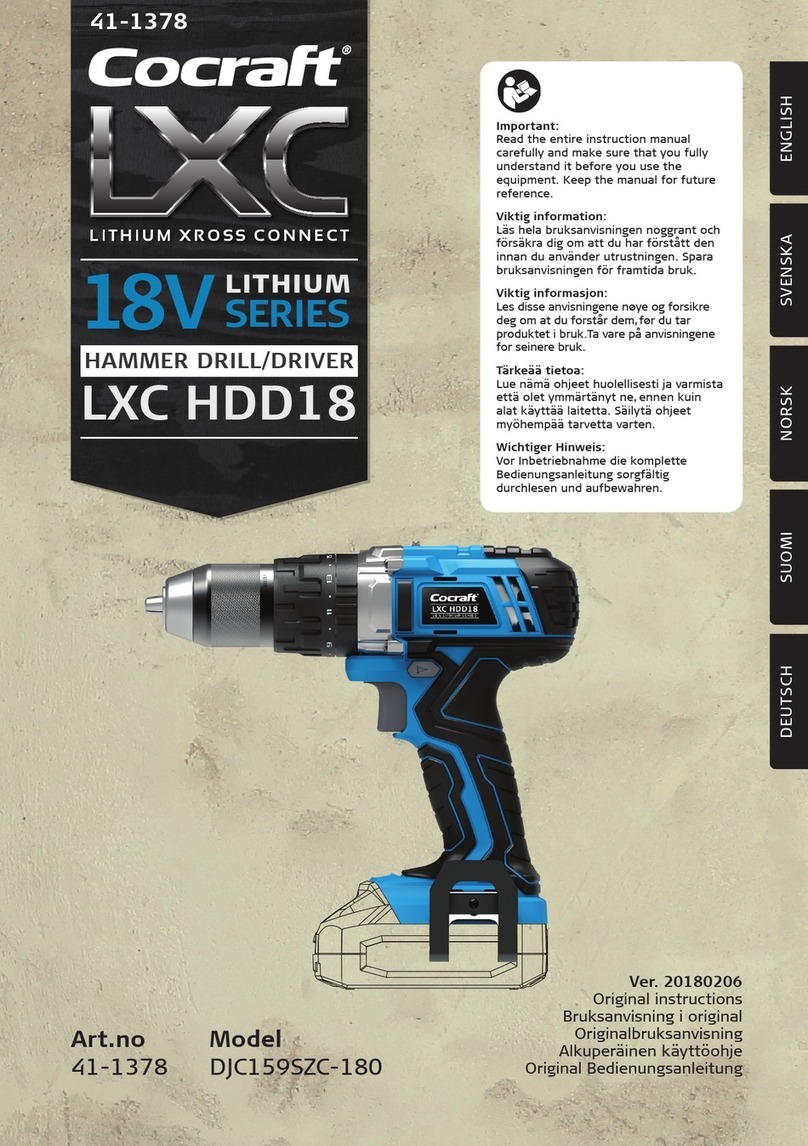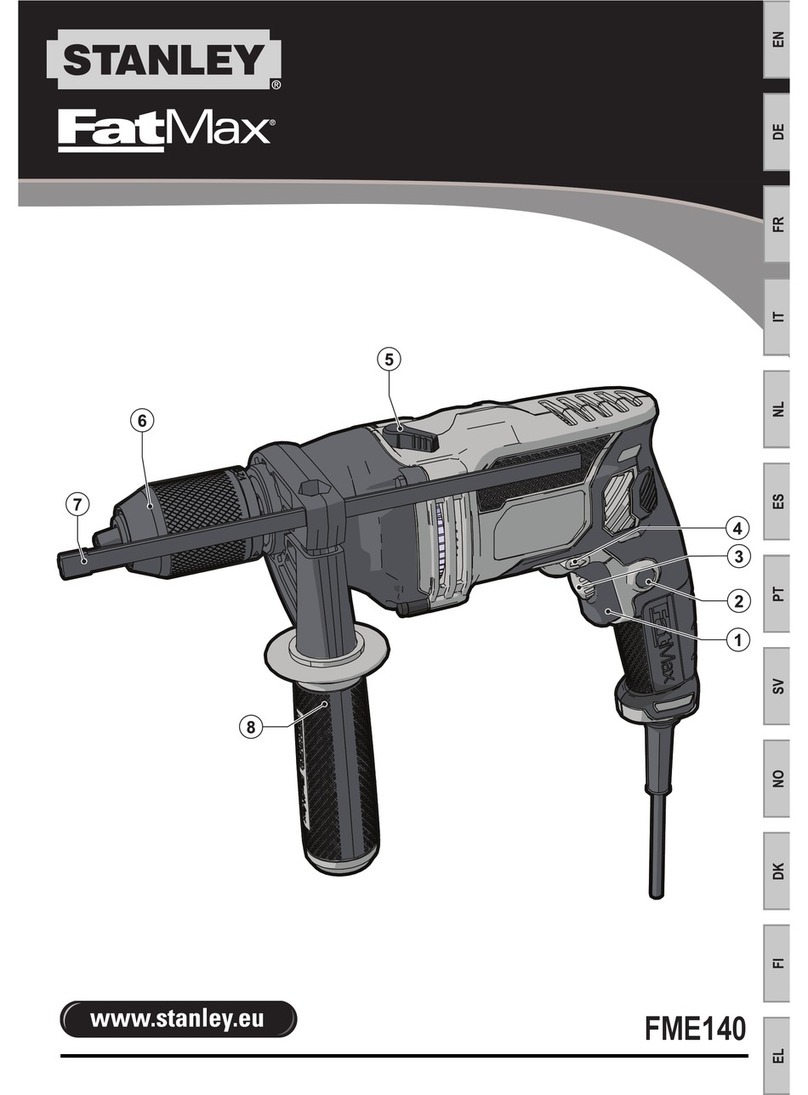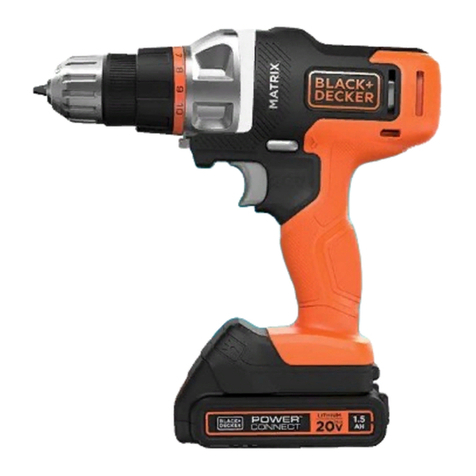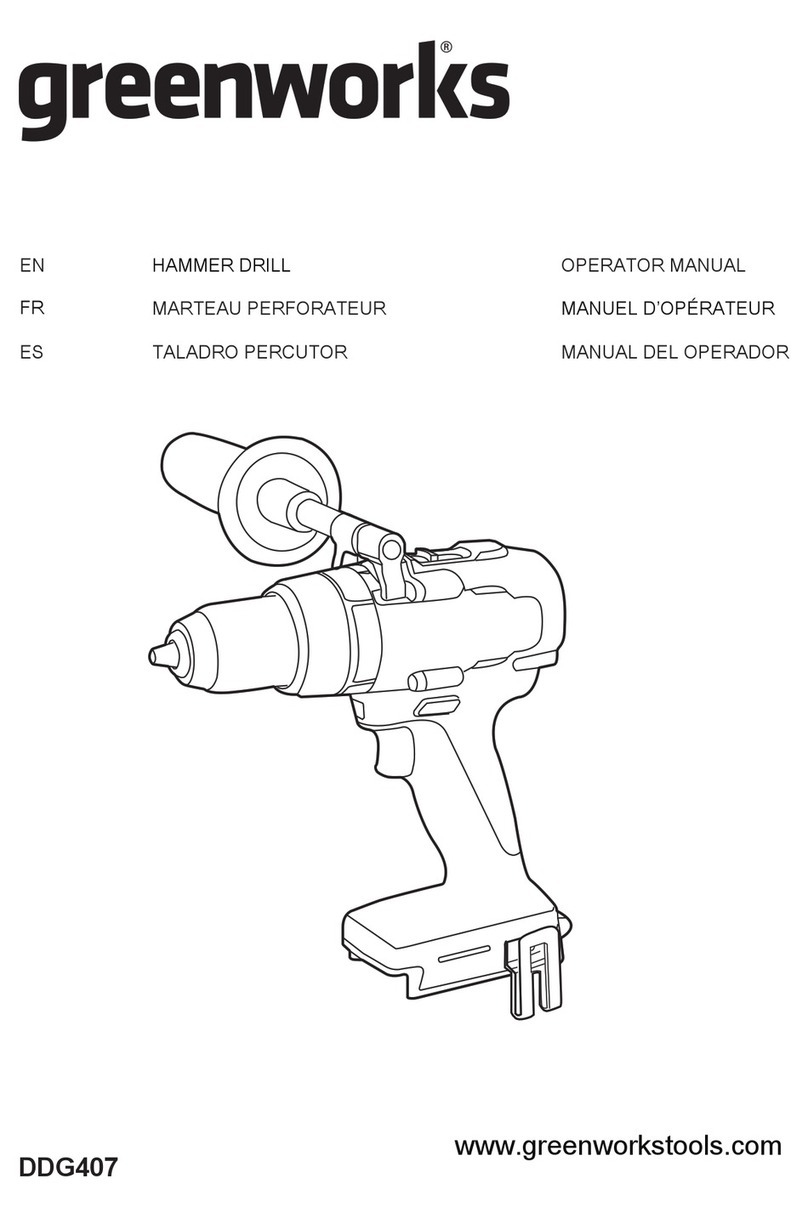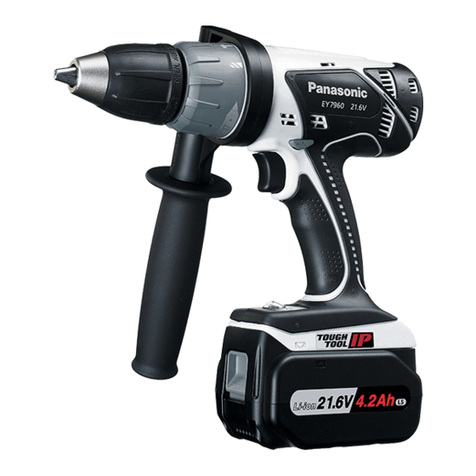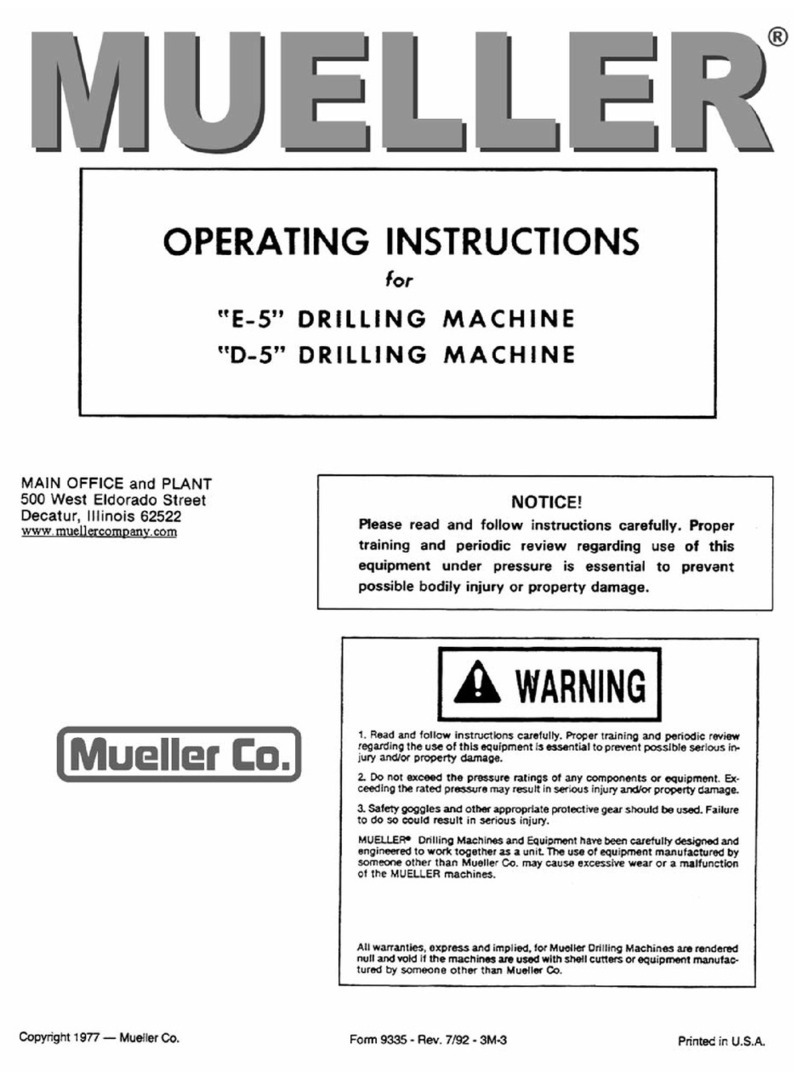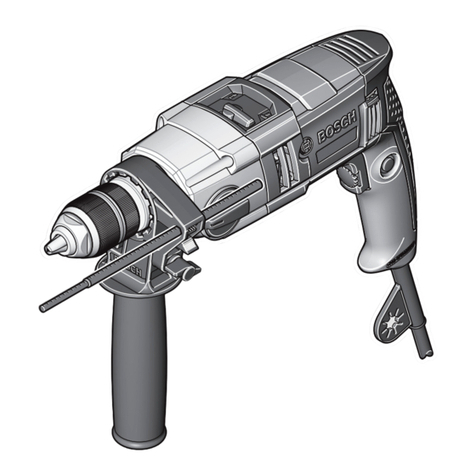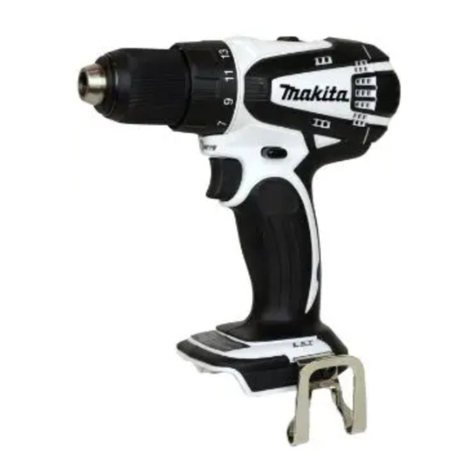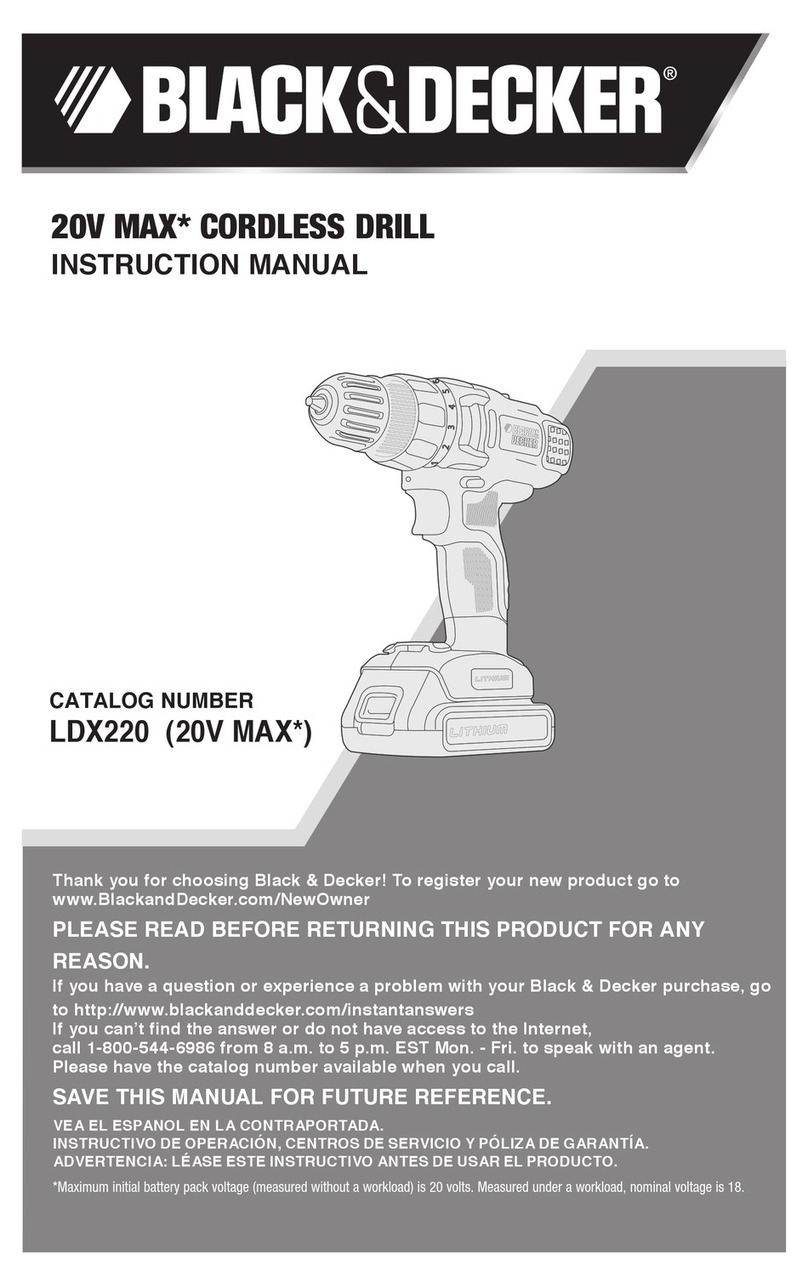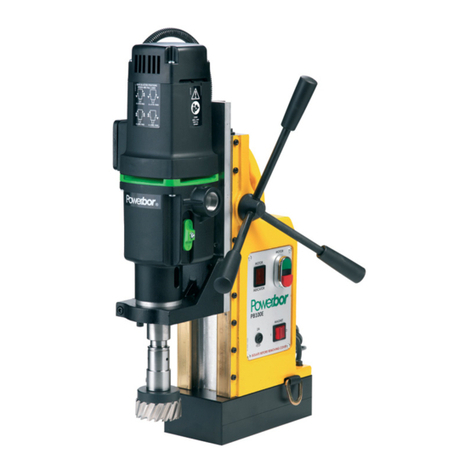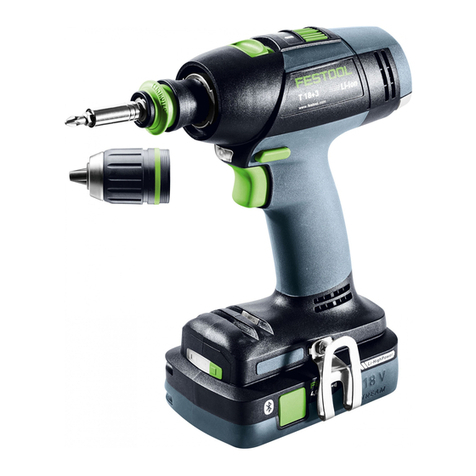
ENGLISH
3
3) Personal safety
a) Stay alert, watch what you are doing and use common sense when operating
apower tool. Do not use apower tool while you are tired or under theinfluence
of drugs, alcohol or medication. Amoment of inattention while operating power
tools may result in serious personal injury.
b) Use personal protective equipment. Always wear eye protection. Protective
equipment such as dust masks, non-slip safety shoes, hard hats, or hearing protection
used for appropriate conditions will reduce personal injuries.
c) Prevent unintentional starting. Ensure theswitch is in theoff-position before
connecting to a power source and/or battery pack, picking up or carrying
thetool. Carrying power tools with your finger on theswitch or energising power
tools that have theswitch on invites accidents.
d) Remove any adjusting key or wrench before turning thepower tool on. Awrench
or akey left attached to arotating part of thepower tool may result in personal injury.
e) Do not overreach. Keep proper footing and balance at all times. This enables
better control of thepower tool in unexpected situations.
f) Dress properly. Do not wear loose clothing or jewellery. Keep your hair, clothing
and gloves away from moving parts. Loose clothes, jewellery or long hair can be
caught in moving parts.
g) If devices are provided for theconnection of dust extraction and collection
facilities, ensure these are connected and properly used. Use of dust collection
equipment can reduce dust related hazards.
h) Do not let the fact that you are used to using power tools make you pay less
attention to applicable safety instructions. A moment’s carelessness can lead
to serious injury.
4) Use and maintenance of the power tool
a) Do not force the power tool. Use the correct power tool for your application.
The correct power tool will do the job better and safer if used at the feed rate for
which it was designed.
b) Never use the power tool if the power switch does not switch the tool on
and off. Any power tool that cannot be controlled by the power switch is
dangerous and must be repaired.
c) Unplug the lead from the wall socket and/or remove the battery (if it is
detatchable) before making any adjustments, changing accessories or
putting the power tool away for storage. These precautions reduce the risk of
the power tool starting unexpectedly.
d) Store power tools that are not being used out of children’s reach. Do not
allow people who are unfamiliar with the tool or its functions to operate it.
Power tools are dangerous in the hands of untrained users.
e) Maintain power tools and their accessories. Check for any incorrect settings,
parts that catch, broken parts or anything else which may cause the power
tool to malfunction. If damaged, have the power tool repaired before use.
Many accidents are caused by poorly maintained power tools.

